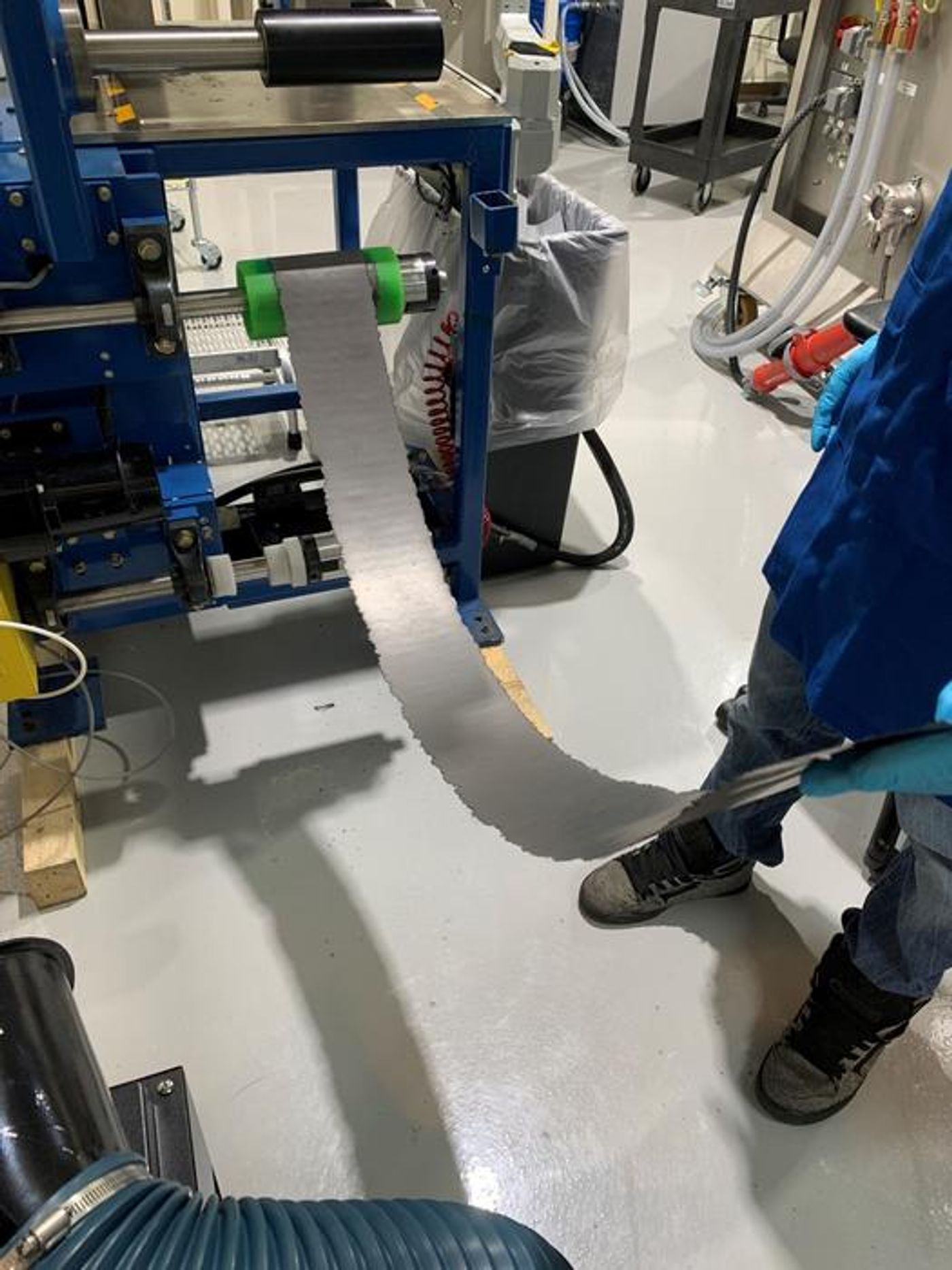Dry Battery Manufacturing Process: A Step Towards Cleaner EVs
Can we make electric vehicles (EVs) even cleaner than they already are by improving the lithium-ion batteries that power them? This is what a recent study published in the Chemical Engineering Journal hopes to address as a team of researchers examines how a novel dry manufacturing process could help eliminate the slurry-based process that involves toxic solvents which are traditionally used to manufacture the lithium-ion batteries used in EVs. This study was spearheaded by the Oak Ridge National Laboratory (ORNL) and Navitas Systems and holds the potential to increase both the durability and energy storage capacity of lithium-ion batteries which could increase the usage of EVs, overall.
Image of the battery anode film developed for this study that was developed by Navitas Systems and examined by Oak Ridge National Laboratory researchers. The film was manufactured using a dry process, and was found to be both strong and flexible, characteristics that could make lithium-ion batteries both safer and more reliable. (Credit: Navitas Systems)
While dry manufacturing offers a multitude of benefits, including its time-, energy-, and waste-saving potential, it also reduces startup expenses, as well. However, given its relatively new approach, its overall potential is bounded by the present lack of knowledge pertaining to its process. This is where ORNL Navitas stepped in to further investigate the dry manufacturing process. The team focused on the interaction between the lithium ions and the electrodes known as the anode and cathode, since this interaction is responsible for generating a battery’s energy.
For the study, the researchers mixed dry powder with a binder, followed by condensing the mixture in hopes of improving contact between the particles. They determined this mixture could be applied to both the cathode and anode depending on the types of materials or mixing procedure. Once the electrodes were made by Navitas, the ORNL researchers tested their performance in a variety of environments and time periods. Their findings showed energy capacity retention rates of 74.1 percent and 63.6 percent over 400 and 800 battery cycles, respectively.
“When you’re looking at the gigascale factories, you’re looking at billions of dollars in order to scale batteries up,” said Dr. Bryan Steinhoff, who is a research engineer at Navitas Systems, along with being the project’s technical lead and lead researcher for Navitas, and a co-author on the study. “Dry processing can eliminate the coating and solvent equipment currently necessary for large-scale battery production. If you can use a dry process instead, you can reduce your footprint by up to 40 or 50%, saving hundreds of millions of dollars and starting to enable the creation of an infrastructure to replace one that is largely dependent on Asia at the moment.”
Going forward, the team will focus on increasing the strength of the material responsible for binding portions of the anode to a thin metal current collector, along with improving battery energy density by decreasing the amount of a material known as carbon black.
What new discoveries will researchers make about lithium-ion batteries and how they can improve EV performance in the coming years and decades? Only time will tell, and this is why we science!
As always, keep doing science & keep looking up!
Sources: Chemical Engineering Journal, EurekAlert!, Oak Ridge National Laboratory









